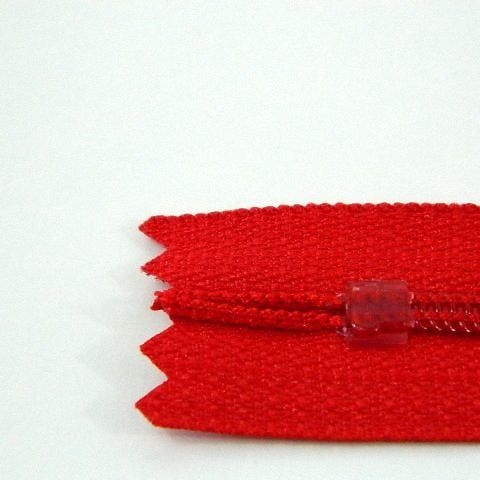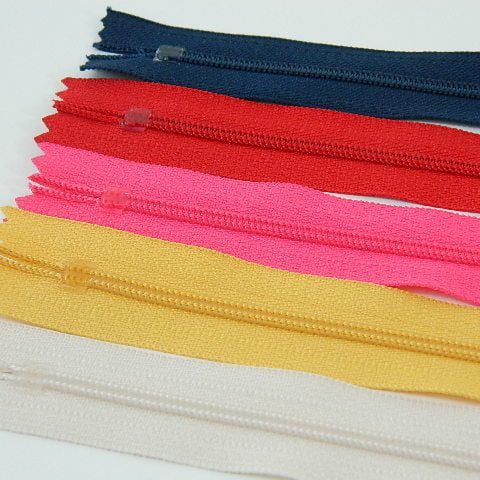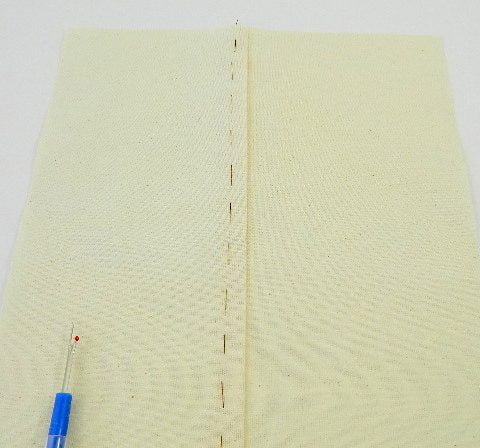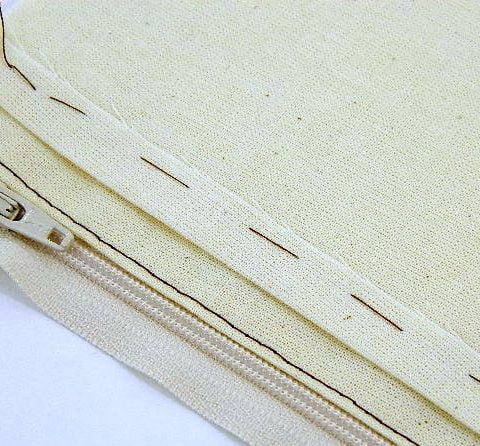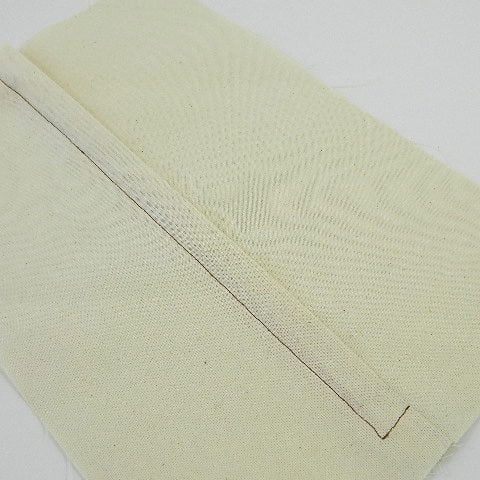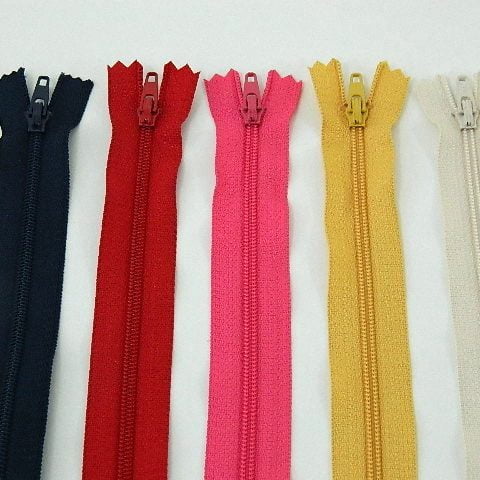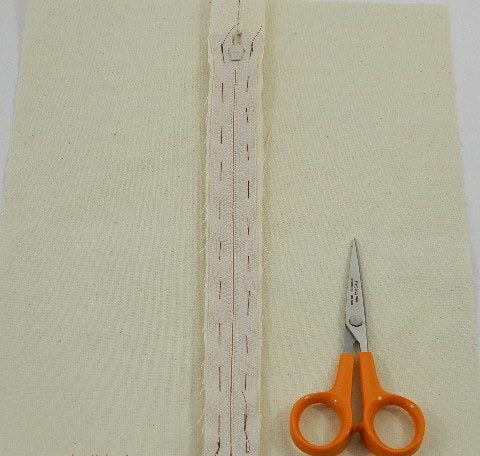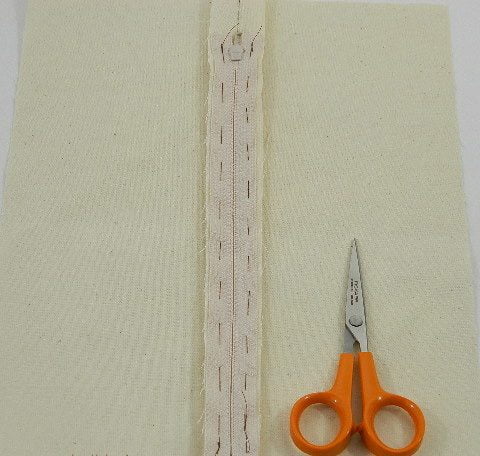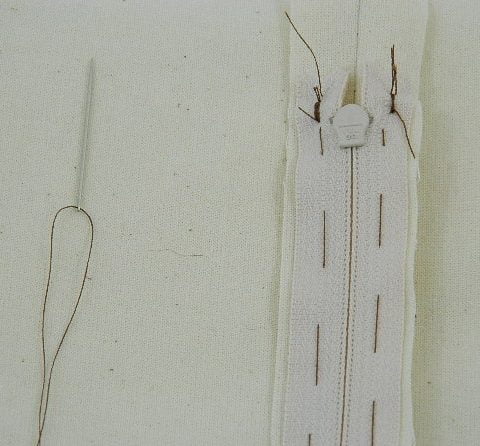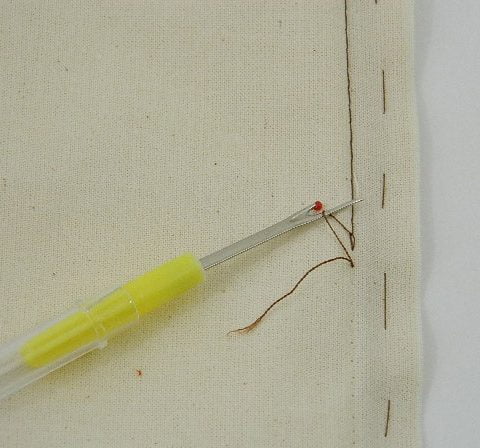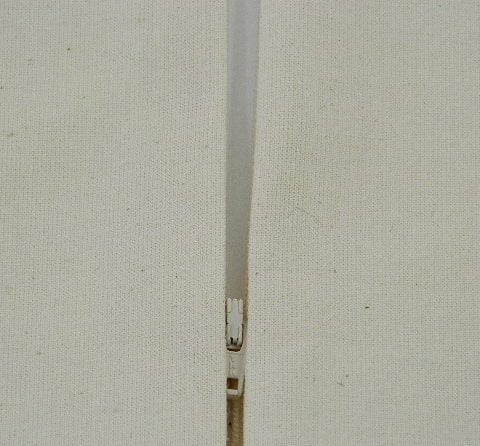This week, in Part 4 of my “How to insert a zip” series, I’ll be explaining how to insert an exposed zip into your projects.
What is an exposed zip?
With this method the teeth of the zip are completely exposed and therefore the zip becomes an intrinsic part of the overall design.
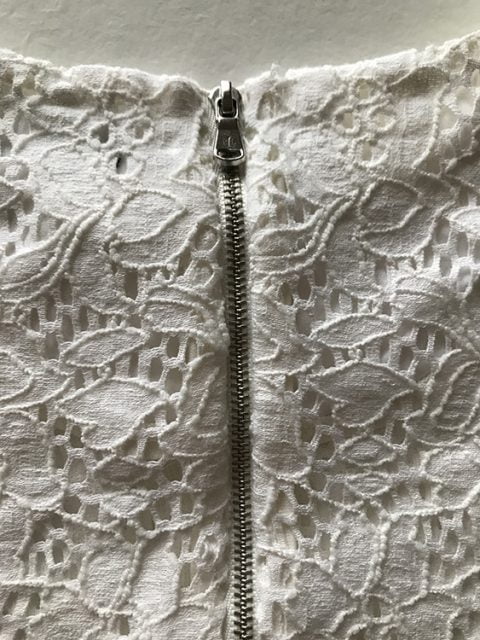
This type of insertion can be used in a more decorative way.
For example:
- use a contrasting colour zip to make it pop out of the fabric
- use on the edge of the cushion in the seam itself either with or without piping
- place diagonally across the panel for a funky twist
As always, when using a sewing machine it is better to use a standard zipper foot.
Did you know?
YKK is the largest zip manufacturer in the world. It makes zips in 9,500 colors and has 20 shades of black in its colour library.
Materials:
- fabric
- thread
- zip
- zipper foot
Method:
- Cut your fabric pieces to the correct size.
- Press a seam allowance along two edges where your zip will be attached.
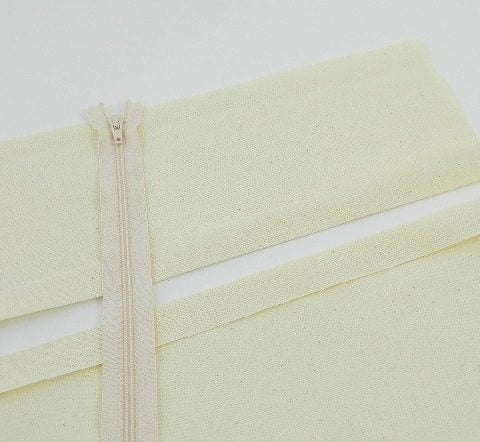
- Place the zip face up and position one of the fabric pieces at the edge of the teeth.
- You may wish to tack or pin it in place.
- Stitch close to the edge of the fabric, taking care not to cover the teeth of the zip.
- Repeat on the other side.


There you have the fourth method of zip insertion, and I think the easiest to achieve.
What have we learnt?
I hope you have enjoyed learning about the various methods for inserting zips and I hope I have been able to demystify the whole process and show it really is quite straightforward if you take it one step at a time.
Over the course of these tutorials I have shown you 4 easy step by step methods for inserting zips into your sewing projects.
We looked at invisible zips, semi-concealed zips, concealed zips and exposed zips. They are all available here.
The uses for each method are varied, and many can be used for the same project.
Most of the time it will depend on how you the designer would like your finished project to look.
Experiment and play around with the different types.

Although not exhaustive, these tutorials explain the basics of working with zips and by following them you will soon be able to use your new skills with confidence.
Please feel free to pop any questions in the comments section below or send me an email and I will do my best to help.
Until next time…happy sewing!

